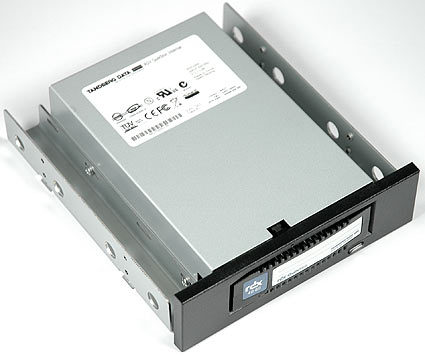RDX QuikStor Hard Drive Solutions Challenge Tape Backup
RDX Feels Like Tape, But Runs On Hard Drives
The information age has led to ever more reliance on critical business data. This data is stored on magnetic disk platters in hard drives, and is prone to deletion or corruption as a result of human error or disasters of any kind. To overcome this issue, we create duplicate copies of this data, so that it can be restored in the event of data loss. In the information technology field, this is commonly referred to as backup.
Companies spend significant portions of their annual IT budget on data backup and disaster recovery plans, to ensure that they are prepared for all types of possible outcomes. It is widely known that data loss can cripple a business, and unlike other business assets, it is uninsurable!
There are many available solutions for data backup these days. The most popular and widespread backup devices are sequential-access tape backup solutions, also known as streamers. Tape solutions are an attractive choice due to their low media cost and long archival stability. However, in recent years much effort has been put into the creation of random access, hard drive based backup solutions. The constant linear decrease in hard drive cost per gigabyte has made it an attractive alternative to other storage mediums. Due to their random-access capabilities, hard drives have really fast seek times compared to sequential access tapes, resulting in quicker and easier access to data.
In 2004, Iomega introduced a hard drive based backup solution under the name REV. The initial REV cartridges had a native capacity of 35 GB, and a 70 GB model was added recently. Tandberg, a leading European data storage company well known for its LTO based tape backup solutions, has now also entered this market. The firm is making use of conventional 2.5" SATA hard disks for its new approach called RDX.
Join our discussion on this topic
Get Tom's Hardware's best news and in-depth reviews, straight to your inbox.
Current page: RDX Feels Like Tape, But Runs On Hard Drives
Next Page Tandberg RDX QuikStor